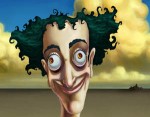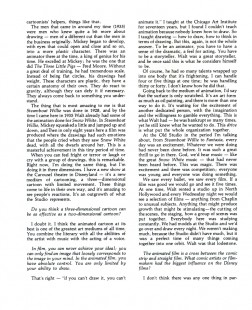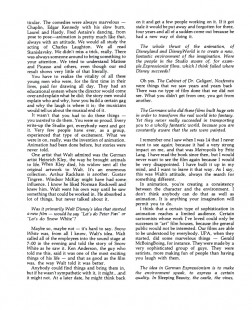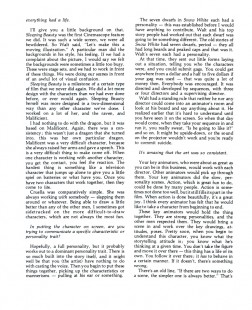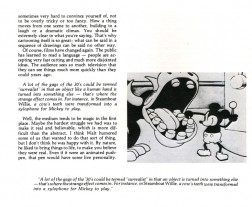Monthly ArchiveJune 2007
Animation Artifacts &Story & Storyboards 20 Jun 2007 07:15 am
Fantasia Leica Reel – Part III
- Continuing with the LEICA reel from Fantasia‘s Nutcracker Suite, here’s an altered version of the sequence I posted last Friday, (go here to view it). This has some new drawings added and some others excluded. It makes for an interesting comparison to see how it’s changed.
As I’ve stated before, many thanks to John Canemaker for lending me this valuable and interesting material.
So back we go to Tchaikovsky:
 A
A  B
B
(Click any image to enlarge.)
Once again, to get a more elaborate understanding of Leica reel creations go to Hans Perk‘s site, A Film LA. You should be going there regardless; it’s a great site.
Commentary &SpornFilms 19 Jun 2007 08:00 am
Show and Tell
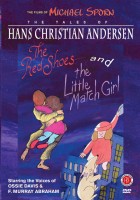
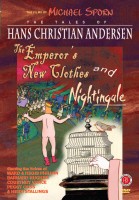 – Tomorrow, Wednesday, ASIFA East will have a program built around the two dvds we have in release this coming week.
– Tomorrow, Wednesday, ASIFA East will have a program built around the two dvds we have in release this coming week.
We’ll show clips from the four films featured on the dvds as well as a bit of the documentaries made for the discs. Masako Kanayama, Jason McDonald, Ray Kosarin and Stephen MacQuignon, all of whom were among those who helped make the films, will join me on the the stage to talk about the energetic little studio we had at the time that made the films in a very short period.
We’ll view the art styles that went into making the shorts and the various techniques we used in the making. I’ll bring some of the art to demonstrate.
If you’re in the New York area, I encourage you to join us for the evening. It’s free.
School Of Visual Arts
209 East 23rd Street
(Bet. 2nd & 3rd Ave)
5th Fl, Rm 502
7 PM
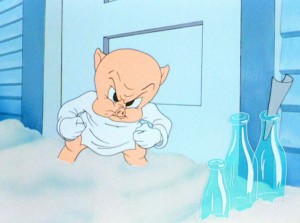 A post I enjoyed this last week appeared on Eddie Fitzgerald‘s Uncle Eddie’s Theory Corner.
A post I enjoyed this last week appeared on Eddie Fitzgerald‘s Uncle Eddie’s Theory Corner.
The thesis Eddie presented is that inbetweens should be more integral to the animated extremes than mere inbetweens. Exact inbetweens of an animator’s work is essentially artless. A close breakdown of a great example, Rod Scribner‘s scene from Bob Clampett‘s Porky Pig short, Kitty Cornered, is given.
The problems occur (as many of those who commented on Eddie’s site stated) when an inbetweener – generally someone relatively new to the profession – is given free reign on an animator’s scene.
At Raggedy Ann, where I supervised NY’s assistants and inbetweeners, we had one novice erase Jack Schnerk’s roughs because she didn’t like the way they looked. The she repaired them and started inbetweening. Fortunately, we were able to reconstruct Jack’s scene and have the scene re-inbetweened.
At Fleischer’s studio in the thirties, for the first weeks of the job, inbetweeners were made to draw exact halves between two lines. Over and over and over and over and over.
Rod Scribner obviously had similar working methods that I was taught by Tissa David. Both qualify as straight-ahead animators. (This was initially the reasoning given for the rift between Ub Iwerks and Walt Disney that ultimately led to their early split.)
For those who don’t quite understand what I’m talking about, an Inbetweener by definition is hired to put missing drawings between two extreme drawings. An animator does drawings #1 & #5. The inbetweener draws #3, then inbetweens #2 and #4. A straight ahead animator would start with drawing #1 then continue forward until completion.
In fact, David and probably Scribner are more an amalgam of straight-ahead AND inbetween.
Tissa hates leaving drawings for an inbetween unless the process is forced on her or there is just too little time. However, working straight-ahead allows strange things to happen to the characters you’re animating. Going from drawing #1 to #2 to #3 etc. the drawings will subtly shift in shape until you can end with something very different by the time you reach the final drawing. Tissa tells the story of a dance scene where the character grew almost twice in size by the time she finished it. She then had to go back and redraw the entire scene, correctly sizing it.
She does very rough roughs for herself blocking the scene, leaving a large number of inbetweens. She then goes back and reworks the entire scene of completely new drawings (not clean-ups of her roughs) working straight-ahead UNLESS there are obviously mechanical inbetweens required. Then she’ll go back to do those inbetweens herself or hand them down to an assistant if available.
I assume Rod Scribner used a similar method. The drawings are too tight, especially the extremes for them to be otherwise. I wonder if there is a way to get inbetweeners to do the special inbetweens that Eddie longs for?
Certainly, they couldn’t be neophytes to animation, but would it make sense for anything less than an excellent assistant?
In my studio, I’ve tried to allow animators to work the way they like. They can work from the loosest of materials (sometimes just the rough storyboards we do) or the most exact of layout. I love it when animators do their own inbetweens, but some of my best animators over the years have required an assistant and an inbetweener. Doug Compton did some brilliant work with enormous vitality, and he definitely works with an inbetweener or five. John Dilworth, on my films, did some of the finest, most insightful character animation drawing his own inbetweens. Both of these guys are, now, excellent directors in their own right, both have similar but different methods of animation.
Eddie Fizgerald ‘s post has been quite thought provoking for me; I encourage you to take a look. Seeing the inbetween poses of that Porky scene is quite revealing. I may continue this with examples of my own. I know, for example, that Jim Tyer left inbetweens but it sure looks like he didn’t. Both Tyer and Scribner often did a more extreme kind of movement. I’m interested in the animators that worked a bit more quietly and did more interesting and expressive inbetweens themselves.
Books &Commentary 18 Jun 2007 07:43 am
The Animated Man
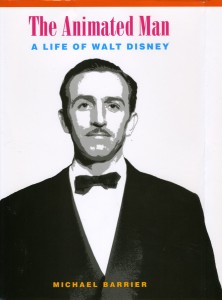 – Michael Barrier‘s The Animated Man: A Life of Walt Disney is unlike any other Disney biography I’ve read. (Since I think I’ve read about 90% of them, that’s quite a statement for me.)
– Michael Barrier‘s The Animated Man: A Life of Walt Disney is unlike any other Disney biography I’ve read. (Since I think I’ve read about 90% of them, that’s quite a statement for me.)
On my initial reading of the first half, I was ready to proclaim the book one of the finest animation books ever written. All the information on Disney’s developing studio in the 20’s, the backstabbing, deal making, and filmmaking was so well organized, detailed and well developed in the book that it was crystal clear where, why and how Disney was pushing his organization to a larger state. Where else have we read that the Disney brothers were HAPPY when Ub Iwerks left?
The story gets even more intense as Snow White grew to completion. We learn about the budget developments, the artistic growth within the studio and the push to meet the final screening. Where else have we read that the final bank loan from BankAmerica wasn’t a make or break it deal, that the studio would NOT go bankrupt if they didn’t get it. And they knew in advance that they were going to get it!
Walt Disney seems to get somewhat confused after the successful opening of Snow White and the large amounts of money that came back to the studio. Prior to this, I had always thought Pinocchio, Bambi et al were well into production as Snow White came to an end, so that there was a smooth transition from the first feature into the line-up of others. But, no. There was a lot of confusion within the studio as productions got switched and development turns from one to another.
Apparently Disney was a restless guy. A revealing comparison between Walt and his father is made, a man who seemed to go from one career to another so wildly in those early years that, prior to this book, I often wondered if everyone was like that at the turn of the 20th Century. I came to realize that these two guys had much in common and were unlike many others of their time.
In many ways it reminds me of something in the Ub Iwerks biography, The Hand Behind the Mouse, by John Kenworthy & Linda Iwerks. That book states that Iwerks felt that once he mastered something, he moved on. He bowled obsessively until he hit a perfect score, 300; then he never bowled again. In some ways it seems as if this were also true of Walt Disney. Once he did something, he moved onto something bigger and more challenging.
The restlessness shows in Disney’s split interest in the features that immediately followed Snow White. The attempts to make money had them thinking about live action from the 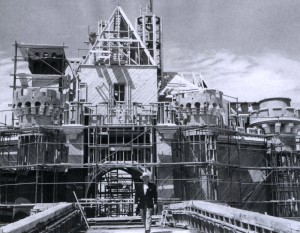 earliest days. I don’t think anyone has written before about this atmosphere from Disney’s point of view.
earliest days. I don’t think anyone has written before about this atmosphere from Disney’s point of view.
The book goes from the Strike to the War to Live Action. Slowly the interest in animation wanes, and the book puts its attention on the aspects of Disney’s world that HE was interested in. When his all-consuming passion shifts away from animation to live action, to the theme parks, to city construction and planning, the book follows this, almost exclusively.
(Images from the book enlarge when clicked.)
This is where it becomes less an animation book – possibly the best animation writing done on Disney, it’s so informative – to the Biography we expected. However, there’s as much detail about Disneyland or EPCOT from Disney’s point of view as there was about animation.
It’s so thoroughly researched that you feel confident that the picture you’re reading is undoubtedly accurate.
For the first half of this book, this is an animator’s version of Disney. The biography we always wanted. When Disney loses interest in animation, the book seems to shift as well, and it should. The true-life adventure films, for example, get more attention than Lady
and the Tramp, which is barely mentioned. In a biography of Disney this is probably appropriate, but as an animation die-hard this is my interest, and consequently the problems with the book, for the most part, are my fault. I got so much about animation at the beginning that I hoped for more later on.
I also wanted more about some of the personal aspects of Disney’s life. I expected, for example, to read more about the death of Disney’s mother; it seems so briefly tossed out in one paragraph I was struck, surprised, at how little attention was given to her accidental death. Disney must have felt guilt over her death when the new home built by the two sons had a faulty gas tank, and she died of asphyxiation, yet so little about it is explored (with a footnote advising us to go to a Bob Thomas book if we’re looking for more detail.)
This made me assume, once I hit this point, that the book was more interested in Disney the entrepreneur/businessman than in Disney the son/husband/father. The private side of Disney, I understand, was less about his personal side than his work. No vacation went without work, no lunch or private conference on the polo field went without discussion of Disney’s interest. The man didn’t have much of a personal life, so I understand the choice.
The focus stays firmly fixed on Walt Disney, the artist. It’s a unique read and one I’ll undoubtedly reread. There’s so much material and so much of it original research and commentary that, oddly, one almost wants more.
The book presents a man who helped to shape the first half of the 20th Century. It wasn’t just in his animation or his live action or his theme park development. It was in all of them, the man who was behind them all. The book offers this man with all of his pluses and minuses with hard-nosed information rather than stories, conjecture or rumor.
Barrier is a treasure among animation writers. His facts are indisputable, his information so all-enveloping, his toughts well-honed and at the top of the game. He’s written an excellent book; one that absolutely engrossed me and, at the same time, challenged me. I recommend it wholeheartedly (in case you couldn’t tell.) With half the number of pages of Neal Gabler‘s recent book, Michael Barrier gives us so much more.
Commentary &Photos 17 Jun 2007 08:04 am
Lil’ Fair – Photo Sunday
- Maybe twice a year, Carmine Street, which is half a block from my studio, hosts a small street fair which works its way off onto Bleecker Street, another block away. Yesterday, was one of those days.
Throughout the summer, these street fairs are the norm and they move all over the city from weekend to weekend. In this local one, the merchants on both streets also join the cavalcade of professional street fair folk who travel from fair to fair.
 1
1  2
2
1. From my studio, this is the view you get looking down Carmine Street toward Bleecker and 6th Avenue.
2. What would a street fair be without a T-Shirt vendor. Just bring your photo.
 3
3  4
4
3. As you move down the center of the street, you get to see the wares a little better.
4. A local restaurant has a selection of bottled herbs for sale.
 5
5The fair always offers interesting ethnic food. This little tent offers Thai food.
 6
6  7
7
6.Here a local vendor offers a wide variety of sunglasses. The sidewalk restaurants have their outdoor tables in full use.
7. Around the corner onto Bleecker Street more of the generic vendors take charge selling their gyros, fries and other foods (all tasty but none good for you.)
 8
8This vendor has probably the best spot right on the corner of Carmine & Bleecker.
This very stand seems to be the anchor for every street fair you can get to over
the entire summer. And that includes the San Gennaro & St. Anthony feasts.
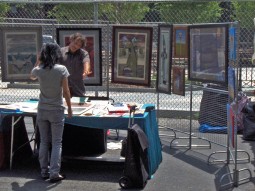 11
11
11. Even art (of a sort) is for sale.
12. Even better is fresh fruit packaged artfully.
 13
13At the entrance (or exit depending on which way you’ve come)
there’s a sign closing off traffic.
At exactly 5PM a thunderous storm hit the Village. Rain came down very hard and ran in buckets. Within 20 minutes, however, it was gone, and the sun was back out. The vendors at the Lil’ Fair must’ve known this, because they quickly covered their merchandise with blue plastic baggies, and waited out the short storm. By 5:30, they were open for business again albeit a little bit wet.
Commentary 16 Jun 2007 08:49 am
Awaiting Moderation
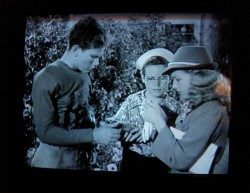 – Last night’s Yankee game found the team that couldn’t hit mediocre pitching had returned to the Bronx, so the game was a bit dull. Since I had gone to a screening on Thursday to see the new Nancy Drew film – a perfectly non-existent entity that tries to be retro, tries to be au courant and ends up being nothing but an attraction for 12 year old girls who probably won’t flock to the theater to see it – I had to keep switching over to TCM to see the series of Nancy Drew films done in the 40′s. They were “B” films that didn’t try to be much and probably ended up being a bit better than the current “A” film that isn’t much.
– Last night’s Yankee game found the team that couldn’t hit mediocre pitching had returned to the Bronx, so the game was a bit dull. Since I had gone to a screening on Thursday to see the new Nancy Drew film – a perfectly non-existent entity that tries to be retro, tries to be au courant and ends up being nothing but an attraction for 12 year old girls who probably won’t flock to the theater to see it – I had to keep switching over to TCM to see the series of Nancy Drew films done in the 40′s. They were “B” films that didn’t try to be much and probably ended up being a bit better than the current “A” film that isn’t much.
However, the features hadn’t yet started on TCM, and they were filling the airtime with a Barney Bear short, The Flying Bear. I came into it just after it had started, hadn’t seen it in at least 20 years, so was thoroughly charmed by the remainder of the short.
I was always a fan of the Ising cartoons, and Barney Bear is probably the closest he came to a running character. The films he made were filled with high production values, excellent animation, artwork and layout. The music of Scott Bradley was probably at its zenith, and the color was just gorgeous.
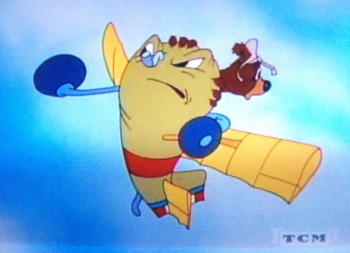 I didn’t like the films once they slipped into the hands of George Gordon, and really didn’t like them when Michael Lah, Preston Blair and Dick Lundy were in control. That group tried to incorporate Tex Avery into Ising‘s personality, and it just didn’t work.
I didn’t like the films once they slipped into the hands of George Gordon, and really didn’t like them when Michael Lah, Preston Blair and Dick Lundy were in control. That group tried to incorporate Tex Avery into Ising‘s personality, and it just didn’t work.
Anyway, watching this MGM short had me thinking about a couple of other sites I’d visited this week.
.
Kevin Langley‘s Goober Sleave has been featuring the MGM shorts for quite some time. He posted a number of model sheets of Barney Bear and it seemed appropriate that I should run into one of the shorts after having just looked at these model sheets again.
Watching the fine character animation of the plane in The Flying Bear had me thinking about other MGM shorts and the house style in the late 30′s – early 40′s and how much I enjoyed those. I’d thought about it a bit earlier in the week when I came upon Thad Komorowski‘s excellent post about the rampant racism in Tom & Jerry cartoons.
I’d seen only one or two T&J shorts at the Museum of Modern Art prior to their appearance on syndicated television back in the late 60′s. When they’d first arrived on TV some of the racist images were eliminated but enough stayed to be annoying. More irritating to me however was the violence in these shorts. Somehow, when T&J cut each other with knives and forks and any other possible sharp object, they HURT each other. It wasn’t like the violence in the Avery shorts or the WB shorts; Tom & Jerry really hurt. I remember vividly watching one of the shorts where they’re running down a well dressed table full of turkey etc., and Tom is cut with a knife. The audience at MOMA didn’t laugh; they gasped.
The scene wasn’t funny; it was vicious.
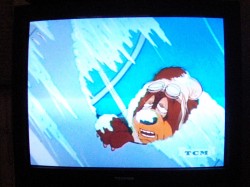 I always had to love the exquisite artwork, animation, BG’s etc. from these films, but Hanna & Barbera’s direction was not for me. I hated their work at MGM. I don’t think I can say that about any others working back then. There were a lot of bad films, but none that I thought so completely insensitive to violence, racism, or anything funny. Perhaps it’s just me, but I don’t think so.
I always had to love the exquisite artwork, animation, BG’s etc. from these films, but Hanna & Barbera’s direction was not for me. I hated their work at MGM. I don’t think I can say that about any others working back then. There were a lot of bad films, but none that I thought so completely insensitive to violence, racism, or anything funny. Perhaps it’s just me, but I don’t think so.
As Thad points out on his site, the racism in these films can’t be excused for the time or place thing that might excuse racist images in Bob Clampett‘s shorts or Tex Avery‘s or even Song of the South. Hanna and Barbera were mean; at least that’s what I perceived from their body of work at MGM.
When the old Nancy Drew came on, it was about as dull as the new one, but the period “B” movie feel brought something positive to the experience. The Yankees lost, as was expected, but the Barney Bear short lingered.
Another site worth reading is the ever excellent Mark Mayerson. His series, Six Authors In Search of a Character is enormously bright and thought provoking. He’s up to part 9, and I rush daily for more.
Animation Artifacts &Story & Storyboards 15 Jun 2007 08:37 am
Fantasia Leica II
- This continues my posting of the Fantasia Leica reel materials that John Canemaker has loaned me. The remainder of the stats are of the Nutcracker Suite, and some are duplications which show some changes in the material. (I’ll post all of them.)
Some of these images have appeared in books by John. (Check out his book Before the Animation Begins.)
I like the fact that they keep fade outs/in in the images.
(Once again, to get a more elaborate understanding of Leica reel creations go to Hans Perk‘s site, A Film LA. here.)
Onto Tchaikovsky, Leopold, if you’re ready:
 2a
2a  2b
2b
(Click on any image to enlarge.)
Commentary 14 Jun 2007 08:53 am
Rats, Skulls & Lil’ Bushes
 – The dining section of yesterday’s NYTimes included an extensive article about Ratatouille (pronounced Rat-a-too-ee).
– The dining section of yesterday’s NYTimes included an extensive article about Ratatouille (pronounced Rat-a-too-ee).
The Disney studio understands well the art of exploiting publicity in all the sections of the Times.
(I have to assume that similar articles appeared in many newspapers across the country.) Next week there’ll be an article in the Science section on how to construct a cg rat. Let’s hope the film will be as tasty as expected.
– There’s an on-line interview with John Dilworth about his film Life In Transition on Quinn Strassel‘s On Stage. It’s short and lite.
_______________________________
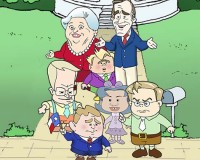 – Thumbs down for Lil’ Bush the new animated series that premiered on Comedy Central last night. Why would anyone think that the country would get any pleasure watching an animated version of the idiot in the White House? It’s hard enough living through these next two years, now we have to put up with an animated reminder of the endless nonsense we’ve been dealt from these Washington thugs. As if that’s a good excuse for humor; I’m living it. I don’t think I’ll be tuning in.
– Thumbs down for Lil’ Bush the new animated series that premiered on Comedy Central last night. Why would anyone think that the country would get any pleasure watching an animated version of the idiot in the White House? It’s hard enough living through these next two years, now we have to put up with an animated reminder of the endless nonsense we’ve been dealt from these Washington thugs. As if that’s a good excuse for humor; I’m living it. I don’t think I’ll be tuning in.
Two local reviews were more than a lil’ bit negative. Here’s The Daily News review.
The NYTimes review by Mike Hale concludes:
- Tonight’s installment of this pioneering cellphone-to-television transfer appears to prove that some things are, in fact, too small even for TV. What looked crude and amusing on a phone — or on YouTube, where the first mobisode has drawn a middling 462,000 views since it was posted nine months ago — simply looks crude on the medium-size screen, despite the improved animation.
My first question is: what’s a “mobisode”? That seems to be what they’re calling them in all press releases.
Here’s a video interview with Donick Cary the “creator” of the show.
Credits issued in the Comedy Central press release are as follows:
- “Lil’ Bush” comes from creator and executive producer Donick Cary, (“The Simpsons,” “The Late Show with David Letterman”) and co-executive producer, Jay Karas. Seth Cummings and Peter Adderton from Amp’d Mobile also serve as executive producers, while Zoe Friedman and David Koga are the executives in charge of production at COMEDY CENTRAL. Animation is being done by Sugarshack Animation.
Lots of exec producers, not so many animators on the list. Pretty pathetic even if it was expected.
______________________ _______________________________
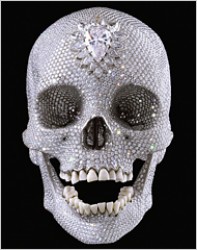 Speaking of yesterday’s news, there was an article in yesterday’s NYTimes about the $100 million sale of the jewel encrusted human skull created by artist, Damien Hirst. It took no time for Mr. Hirst to comment that the diamonds in the skull “are all ethically sourced, each with written guarantees in compliance with United Nations resolutions.†The diamonds were “conflict-free.†I guess for $100 million that’s the least I might’ve expected.
Speaking of yesterday’s news, there was an article in yesterday’s NYTimes about the $100 million sale of the jewel encrusted human skull created by artist, Damien Hirst. It took no time for Mr. Hirst to comment that the diamonds in the skull “are all ethically sourced, each with written guarantees in compliance with United Nations resolutions.†The diamonds were “conflict-free.†I guess for $100 million that’s the least I might’ve expected.
Damien Hirst was one of the artists that Rudolph Giuliani tried to have censored in 2001 when an exhibit that included Hirst’s cow under glass and Chris Offili‘s Virgin Mary painted with elephant dung opened at the Brooklyn Museum. This occasion drew thousands of protestors – mostly against Giuliani – to the Museum, and it made me more aware of the two artists. Now it seems that Hirst has taken his art to a new plateau.
The arrogant attempt by Giuliani to shut the show at the Museum was just one of his many attempts at violating the rights of the citizens of NY. Perhaps he’s the real Lil’ Bush.
The article in the Times is a good read.
______________________ _______________________________
Mark Mayerson has been posting an excellent series of articles entitled Six Authors in Search of a Character. He’s up to Part 9, and he is writing something very rich for animation commentary. I’ve been saving this material in printed form, and someday I hope Mark will locate a publisher for it. Take the time to read it all.
Articles on Animation 13 Jun 2007 08:05 am
Marc Davis Interview
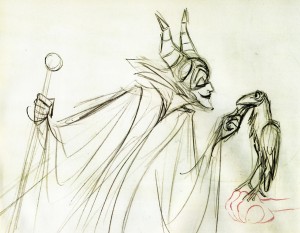 – Years ago I had a copy of a lecture that Marc Davis had given in which he compared the differences and the similarities between two characters he animated, Cruella De Vil and Maleficent. He discussed their motivations and their style of exposition. It was quite an extraordinary commentary, I’d thought, but somehow I seem to have lost it.
– Years ago I had a copy of a lecture that Marc Davis had given in which he compared the differences and the similarities between two characters he animated, Cruella De Vil and Maleficent. He discussed their motivations and their style of exposition. It was quite an extraordinary commentary, I’d thought, but somehow I seem to have lost it.
It was a great acting lesson from a great animator, and it seemed to offer depth that I haven’t found elsewhere. I’ve found myself paraphrasing from the comments Davis had made and thought to search for the document.
I have found something with similar thoughts that were expressed in this interview that was conducted by A. Eisen for Crimmer’s: The Harvard Journal of Pictorial Fiction. The interview was published in 1975.
(I tried to locate A. Eisen but couldn’t find any other articles or information by anyone with that name. For that matter, I haven’t been able to locate any other editions of this publication. Burne Hogarth artwork is on the cover. Does anyone know of other issues?)
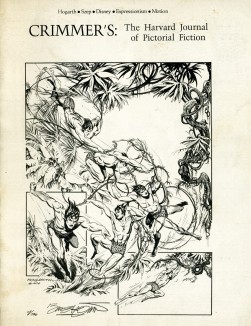 A
A 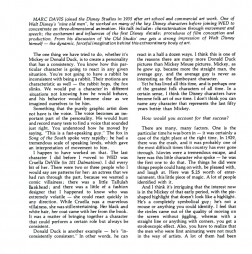 1
1
(Click any image to enlarge.)
There are other interviews with Marc Davis on line. I like this one with John Province. That interview also appeared in Didier Ghez‘s book, Walt’s People Vol. 1.
Books 12 Jun 2007 08:00 am
Tony Goes Flying
- Tony Eastman is one of New York’s animation jewels. He’s been an animator/director for as long as I can remember. He’s produced animation films and animated for others. He’s aslo worked with me on a couple of projects; he’s quite a talent with a sensitive style and a smile in his work.
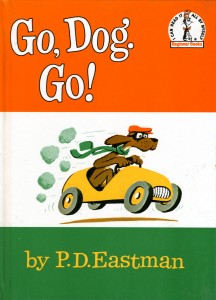 Tony is the son of Phil Eastman. We animation people know him as the co-author with John Hubley of Brotherhood of Man, one of the films that started UPA. To quote the introduction to the published script:
Tony is the son of Phil Eastman. We animation people know him as the co-author with John Hubley of Brotherhood of Man, one of the films that started UPA. To quote the introduction to the published script:
- THE SCRIPT of Brotherhood of Man and the illustrations from that animated cartoon are essentially an end product of a pamphlet called Races of Mankind which was written in 1943 by Drs. Ruth Benedict and Gene Weltfish, anthropologists of Columbia University. It was designed for presentation to men of the armed forces as an antidote to racial prejudice. This film has been made by United Film Productions at the instance of the UAW-CIO.
However, Phil Eastman as P.D. Eastman is known to the rest of the world as the genius behind all those early-reader books for young kids which were published by Random House.
Likewise, Tony Eastman is following in his father’s footseps using the name
Peter Eastman for the children’s books he is authoring. 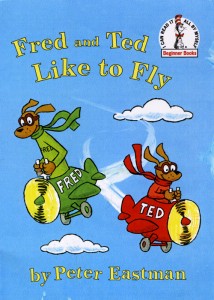
This is to celebrate his newest book which just hit the market: Fred and Ted Like To Fly, the follow up to his successful book, Fred and Ted Go Camping.
Beginner books are particularly difficult to do in that the vocabularly is more limited, the stories are simpler, and it takes enormous creativity to keep them smart and sharp. I very much like the twists that Peter “Tony” Eastman has taken to the form and feel that he has taken the scepter left behind by his father, and brought it to new heights.
It looks like Dr. Seuss, who is probably more popular than even in his lifetime, has some serious competition. Are these characters going to transfer to animation anytime soon?
Congratulations to Tony. He deserves some great success with these new children’s classics he’s writing.
- Speaking of books, I’ve always enjoyed it when authors review other authors’ works. Give me John Updike reviewing any book in the New Yorker, and I’m ready to fly. When animators write books there’s often something special going on. Recently, I’ve read two such reviews of Mike Barrier’s new book, The Animated Man: A life of Walt Disney.
John Canemaker has an interesting review about to be published in Print Magazine. It’s quite astute and an in depth evaluation. It’s only available in print editions, so look for it to hit the newsstands soon.
David Levy, ASIFA East‘s President has a column in the new newsletter sent out to members. This hasn’t yet appeared on the ASIFA East website (I’m sure it will soon.) However, David gave me permission to post it here. Since I think he has some intelligent comments to make I’m pleased to showcase it.
 A life of Walt Disney by David Levy
A life of Walt Disney by David Levy
- I’ve read a handful of biographies on Walt Disney over the years, and I can say with certainty that Michael Barrier‘s new book, The Animated Man: A life of Walt Disney (University of California Press) is the very best. Although the book is laden with quotes pulled from interviews with those who knew and worked with Walt, the anchor of the book is Barrier’s research based conclusions. The author pulls much of his best information from official documented studio notes taken from meetings that demonstrate Disney’s role in shaping his studio’s art.
Here are just some of the book’s many revelations that just about blew me away.
1. The reality that Oswald The Lucky Rabbit, Disney’s pre-Mickey character series, was not a project born of inspiration. In fact, Universal ordered the series by description, asking for a rabbit character named Oswald the Lucky Rabbit. As Barrier tells it, Disney arrived back at his studio with the news that his crew would be switching production from Alice to Oswald. It reminded me of a factory switching product manufacturing based on a new order, which in essense, is what it was.
2. The idea that departure of Ub Iwerks from Disney was actually a plus and a necessary incident in the development of animation at the Disney studio.
3. The fact that little or nothing in Disney’s early pre-Mickey Mouse’s history shows any evidence that he would become the artist/industry leader that he became. Disney’s early works are as crude and filled with short cuts as any other silent era animation producer.
4. Disney features from Cinderella onwards were no longer pre-scored beyond song sequences. For exam ple, in an early feature such as Pinocchio, the music that accompanied Jiminy Cricket’s dash across the street would be pre scored, in other words, written and recorded before any animation was done.
The story artist, sequence director, and lead animator would work with the track and the resulting animation was connected to the sound track in a ay that could not be achieved by post scoring the animation. Scoring a film after the picture is complete is the way live action films are made and that is one of the reasons why all the Disney features from Cinderella through Jungle Book are a far less rich experience.
5. The suggestion that the two Disney feature films that assigned animators to characters the way actors are cast as characters were all
the more better because of it. For evidence, seek out Fred Moore‘s seven dwarf animation and Bill Tytla‘s animation of Dumbo and his mother.
6. The way Barrier connects how Disney’s passions for trains and miniatures paved the way towards his creation of Disneyland. Talk about productive hobbies! Finally, a key theme of the book is that the animation breakthroughs leading up to and including Snow White and the Seven Dwarfs did not really lead the Disney artists beyond that. In a form of arrested development, key animation innovators such as Tytla, Babbit, Ferguson, and Moore, were all replaced by younger higher-quality draftsman, Nine of which, would become the fabled “Nine old men”. While the draftsmanship improved under the Nine old men, a life-sucking literalness also crept into the animation. Each of us can decide for themselves if what was gained was worth more than what was lost. But, of course, nothing is really ever lost, just possibly a sleep for a while (Just like Snow White, herself). Pick up this book today! It’s your summer read.
And, if you just can’t get enough Michael Barrier, check out his great Web site: www.michaelbarrier.com. I also highly recommend his terrific commentaries on the four Warner Brothers cartoon DVD collections.
Personally, I’m just about creeping up to the end of the book. As soon as I do, I’ll give some comments of my own which certainly won’t be as observant or as articulate. Thanks to David Levy for allowing me to reprint this. It should also appear on the ASIFA East site soon.
Animation Artifacts &Story & Storyboards 11 Jun 2007 07:47 am
Fantasia Leica I
- Once again, John Canemaker offered, and I jumped.
From his collection we have some of the Leica reels for Fantasia. 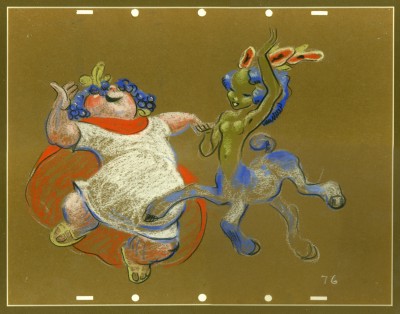 The Leica reel was virtually a slide show that timed out the drawings to the soundtrack. It gave an inexpensive indication of the film’s timings, and it could be easily adjusted for further screenings.
The Leica reel was virtually a slide show that timed out the drawings to the soundtrack. It gave an inexpensive indication of the film’s timings, and it could be easily adjusted for further screenings.
(To get a more complete explanation of Leica reel projections Hans Perk on his site, A Film LA, has an excellent post about this – here.)
(Click on any image to enlarge.)
There are quite a few pages of these, so it’ll take a couple of weeks before I’ll be able to post them all. (They also take a lot of time to scan and prepare for posting.) They’re all equally beautiful.
Many of the sections loaned me by John are from the Nutcracker section. However, I’m going to start with this section from the Pastoral symphony. The drawings are by James Bodrero. I start with this section because I wanted to give an indication of what the actual drawings look like, and John had this one from this sequence (not used in this version of the animatic), and I’m posting it to the left.







